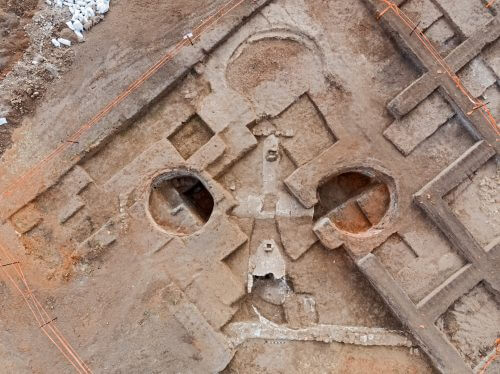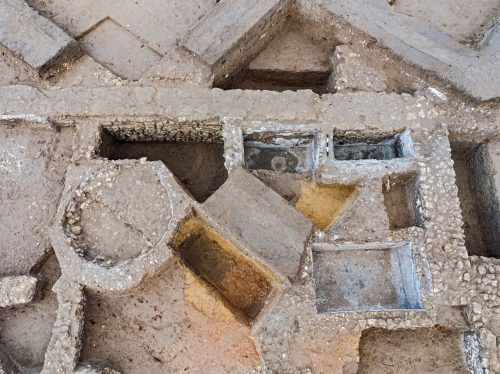In an archaeological excavation conducted by the Antiquities Authority in southern Ashkelon prior to the establishment of an eco-sport park initiated by the Municipality of Ashkelon and the Ashkelon Economic Society, an ancient industrial area was discovered which reveals: the Roman menu also reached the Israeli table. , but its preparation involved strong smells

Pools for making fish sauce (garum), one of the known units in the eastern Mediterranean basin, were recently uncovered in the excavations of the Ashkelon Antiquities Authority. The excavations, which are being funded by the Ashkelon Municipality and the Ashkelon Economic Company prior to the establishment of the Eco-Sport Park, revealed evidence of the culinary preferences of the Romans and Byzantines who lived here 2000 years ago. The excavation was attended by the members of Garin Nahal from Kibbutz Yad Mordechai and the students of Makif XNUMX High School in Ashkelon, the excavation area is located right behind it.
According to Dr. Tali Erickson Gini from the Antiquities Authority, "Long before the pasta and pizza sauce, the cuisine of the ancient Romans was based on fish stock: historical sources tell about the production of the special fish sauce, which was used as a basic seasoning for dishes in the Roman and Byzantine periods throughout the Mediterranean basin. It is said that the stench involved in its preparation pushed its production areas to the outskirts of the settlements, and indeed, even in this case, the facilities were found at a distance of about 2 km from old Ashkelon."
According to Erickson-Gini, "This is a rare discovery in our region. Only a few installations of this type are sold in the eastern Mediterranean basin. The scriptures even say that Garum was a kosher Jew. The discovery of such a facility in Ashkelon indicates that the Roman taste traveled throughout the empire not only in clothing items, but also in eating habits."

Over the years, the Roman site was abandoned, but the good conditions offered by the area for growing quality grapes for wine remained intact, and in the 5th century AD, during the Byzantine period, a monastery began to operate on the site, which seems to have made a living from this industry; 3 ghettos and a magnificent church were built there. Although this one did not survive, items from it, such as decorated marble pieces and impressive mosaic pieces that decorated it, were found on the site. Not far from the wine cellars, the remains of a huge workshop for pottery jugs, which were used to market the wine, were also uncovered. It seems that the wine was marketed for export.
According to Dr. Erickson-Gini: "The site, which was used as an industrial area for several periods, was abandoned again after the Muslim conquest in the 7th century AD, and then nomadic families settled there - apparently in tents, and they dismantled the various parts of the site and sold the ancient parts as building materials for money.” Evidence of this activity was found in the gathering pits of the Gaths which were turned into garbage pits, containing a large amount of large animal bones, such as donkeys and camels.
The excavation, financed by the Ashkelon Economic Company, is taking place in preparation for the establishment of a large eco-sport park in which an artificial pool, a stadium and other facilities are planned for the residents' well-being.
The mayor of Ashkelon, Tomer Glam, welcomed the important findings and added: "Ashkelon is one of the oldest cities in the world, and from time to time we receive proof of this. This is about exposure in one of the newest and most beautiful neighborhoods in the city, which creates a special combination between the city's rich past and its developing present and progressive future."
See also a series of articles by Dr. Yehiam Sorek, Dedicated to the economy of the Land of Israel from the Roman period to the Middle Ages
